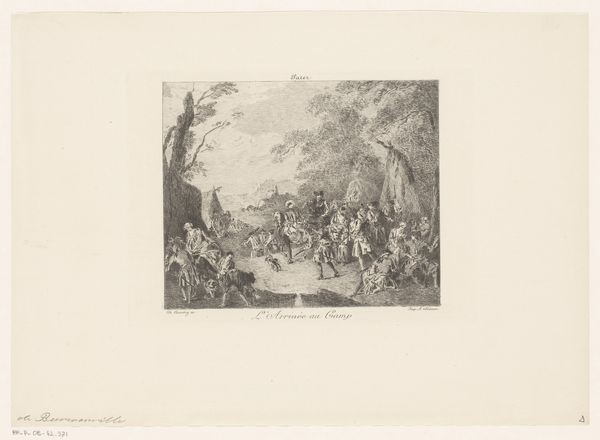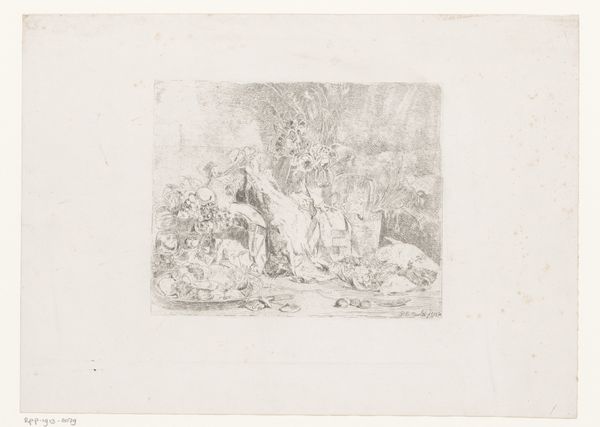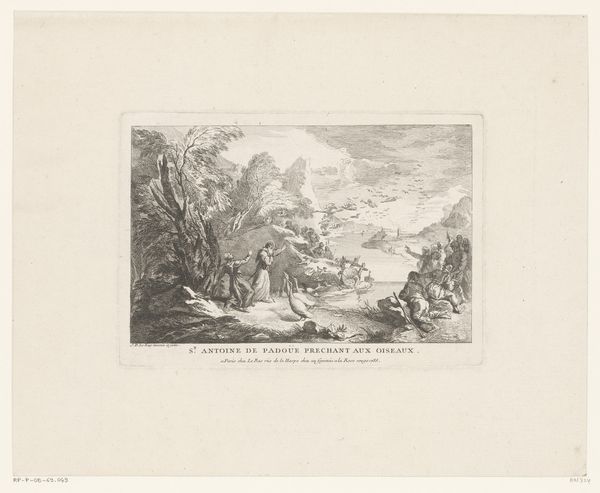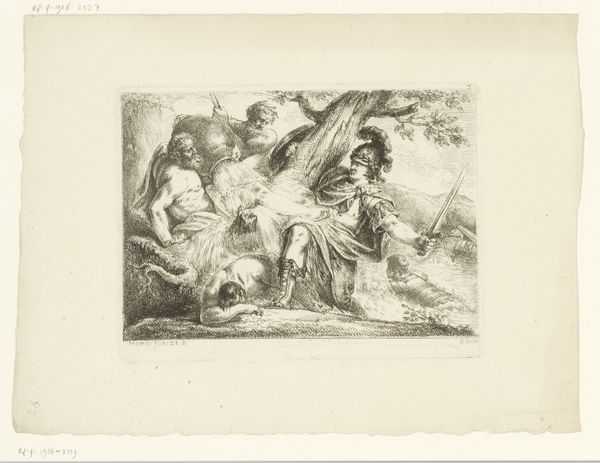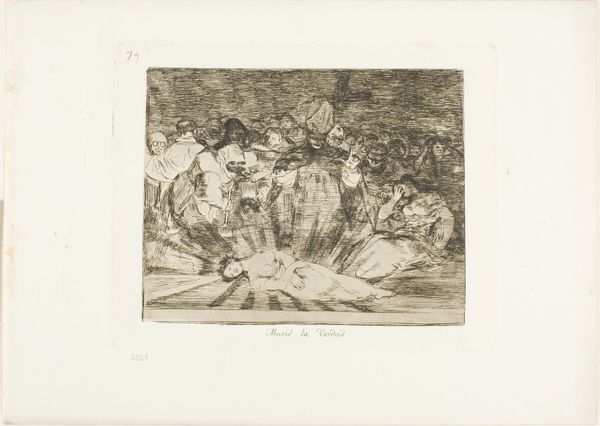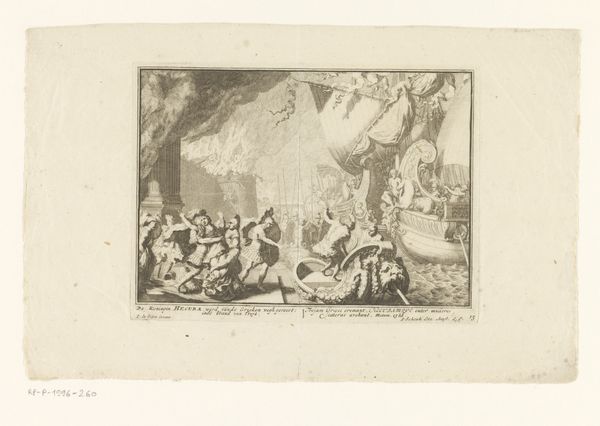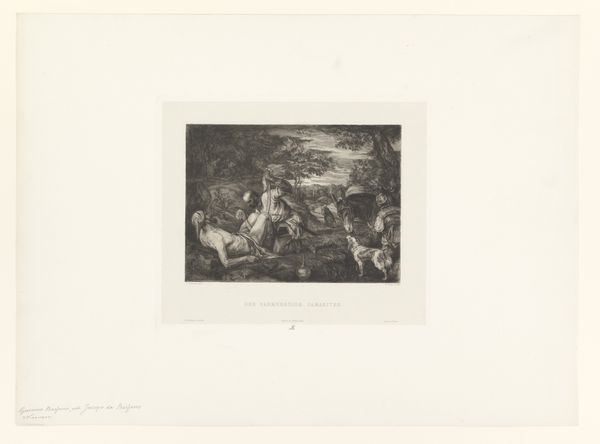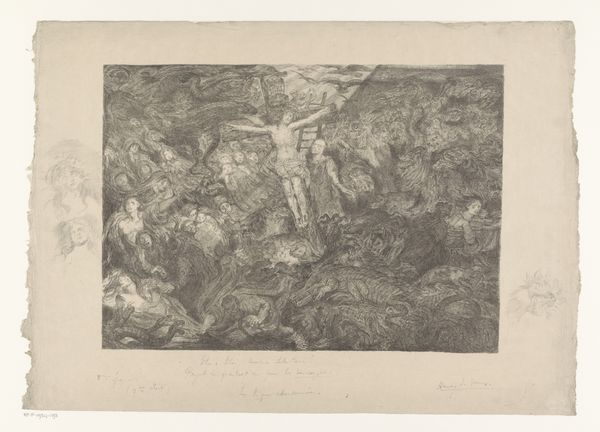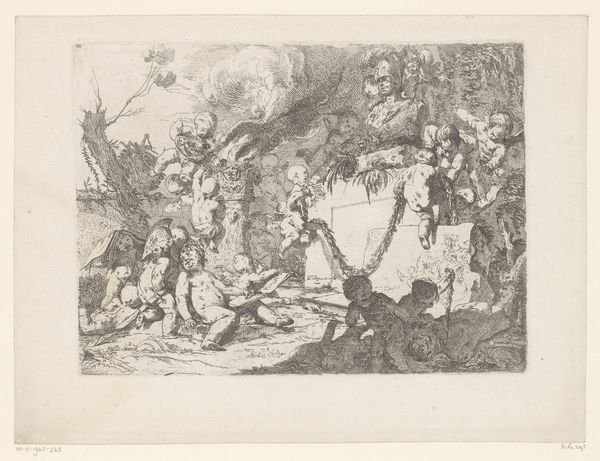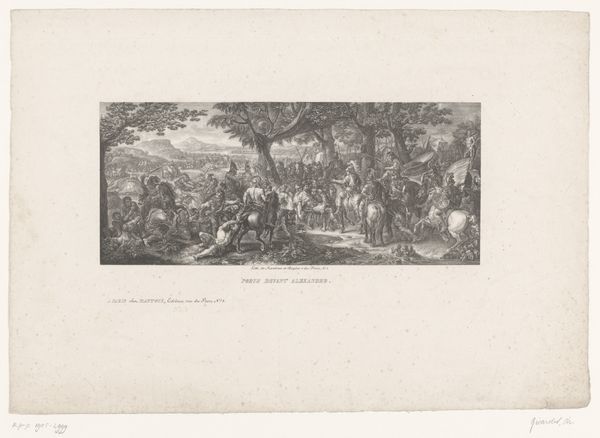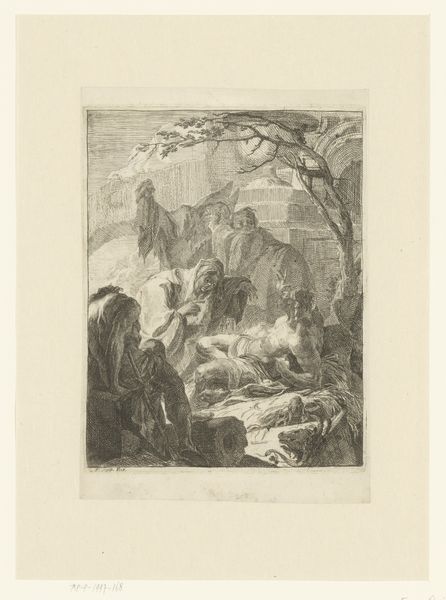
print, etching, engraving
#
ink paper printed
# print
#
etching
#
old engraving style
#
landscape
#
genre-painting
#
history-painting
#
engraving
Dimensions: height 140 mm, width 189 mm
Copyright: Rijks Museum: Open Domain
Editor: So, here we have "Landscape with a Military Camp" by Charles Courtry, an etching from 1881, currently at the Rijksmuseum. It's rendered in an old engraving style that gives it this sense of a tableau vivant. What stands out to me are all these figures arranged in a way that feels theatrical. What do you make of it? Curator: The "theatrical" element you pinpoint is crucial. Consider how camps, across centuries, represent not just military might but also performative space. Note the dominance of tent-like structures that echo ritual canopies. Ask yourself, how does this imagery act as a visual memory linking ancient nomadic life with the structured hierarchy of the military? Editor: That's a really interesting way to look at it. I was caught up in just observing the people but not reading into their symbolic importance. Could you elaborate on this visual memory? Curator: Look at the casual arrangement of figures beneath the tent. Are they resting or reveling? Consider, across art history, depictions of soldiers often blurred lines between duty and indulgence. How does the act of representing the leisure of soldiers potentially offer commentary on war itself? Editor: It seems to be hinting at the human element often obscured by the grand narratives of history. It kind of strips down the romanticism. Curator: Precisely. And that stripping down, that unveiling, utilizes symbols that connect to cultural ideas of order, leisure, and hierarchy that we inherit, perhaps unconsciously. This is a work, in effect, built upon echoes. Editor: I never thought about it that way. Seeing it as an arrangement of symbols passed down over generations makes it much more than just a scene. Thanks so much for opening my eyes to the different visual interpretations and memories it carries. Curator: And thank you for your observations. Spotting that "theatrical" quality offered us a crucial starting point into deeper cultural meanings behind apparently simple image.
Comments
No comments
Be the first to comment and join the conversation on the ultimate creative platform.
